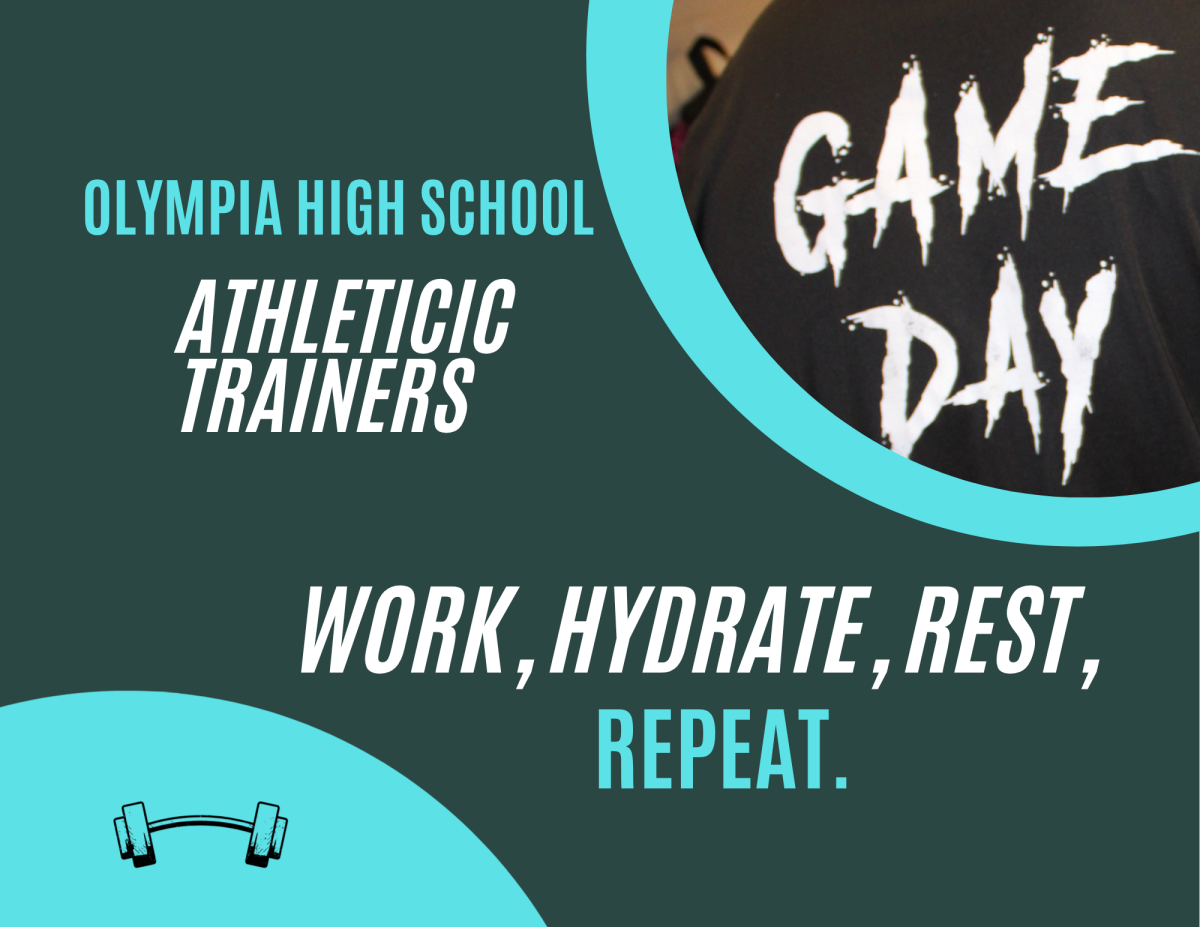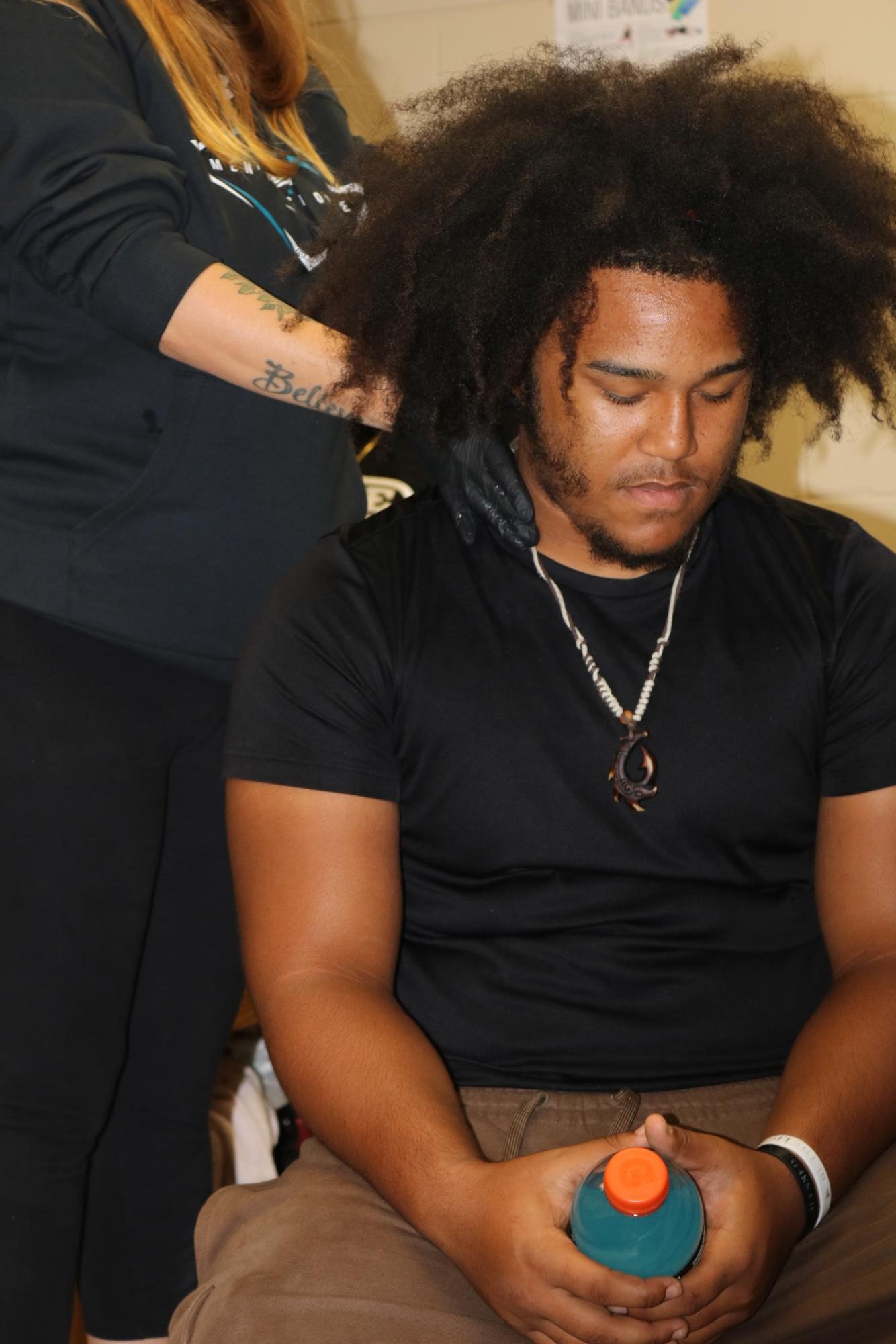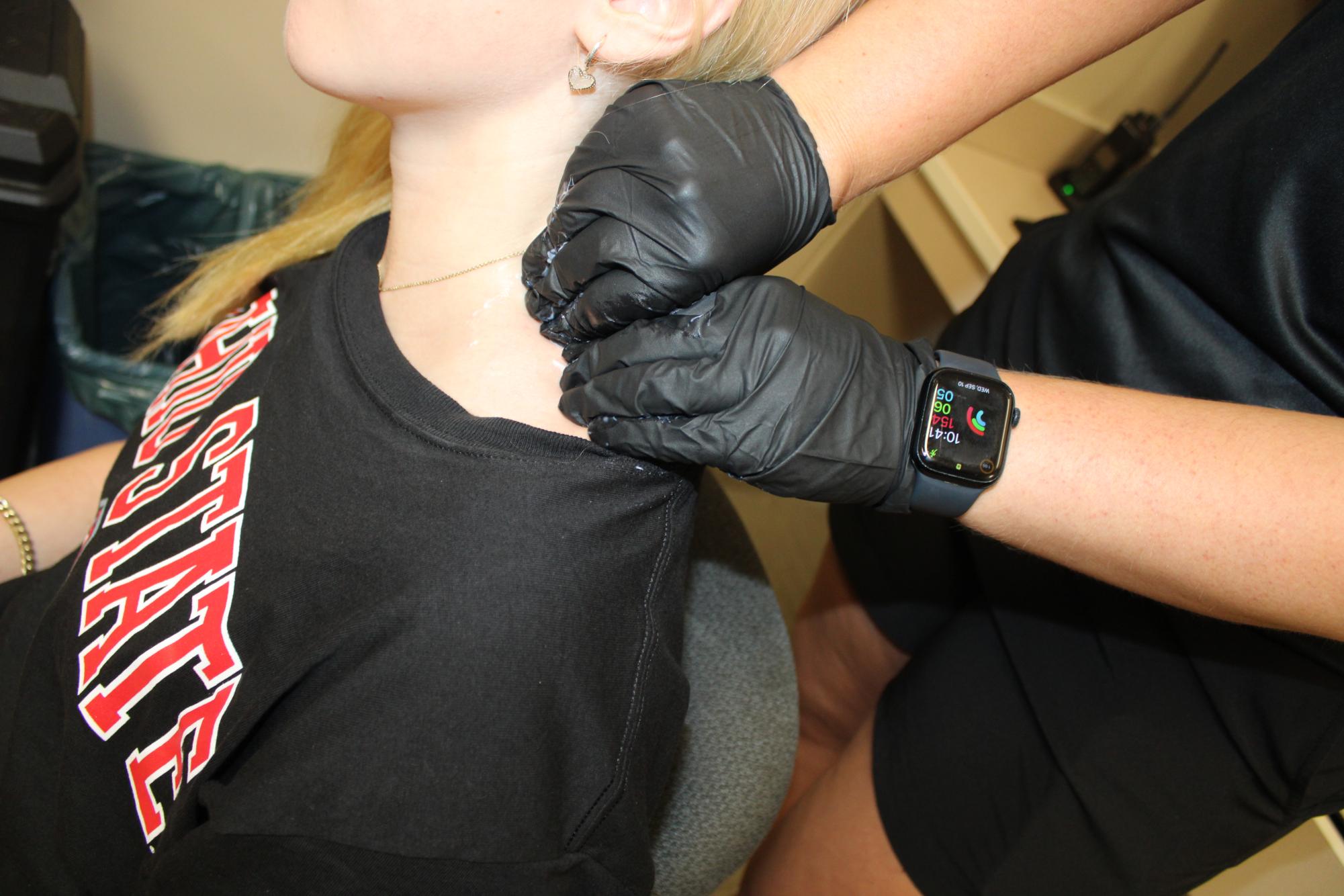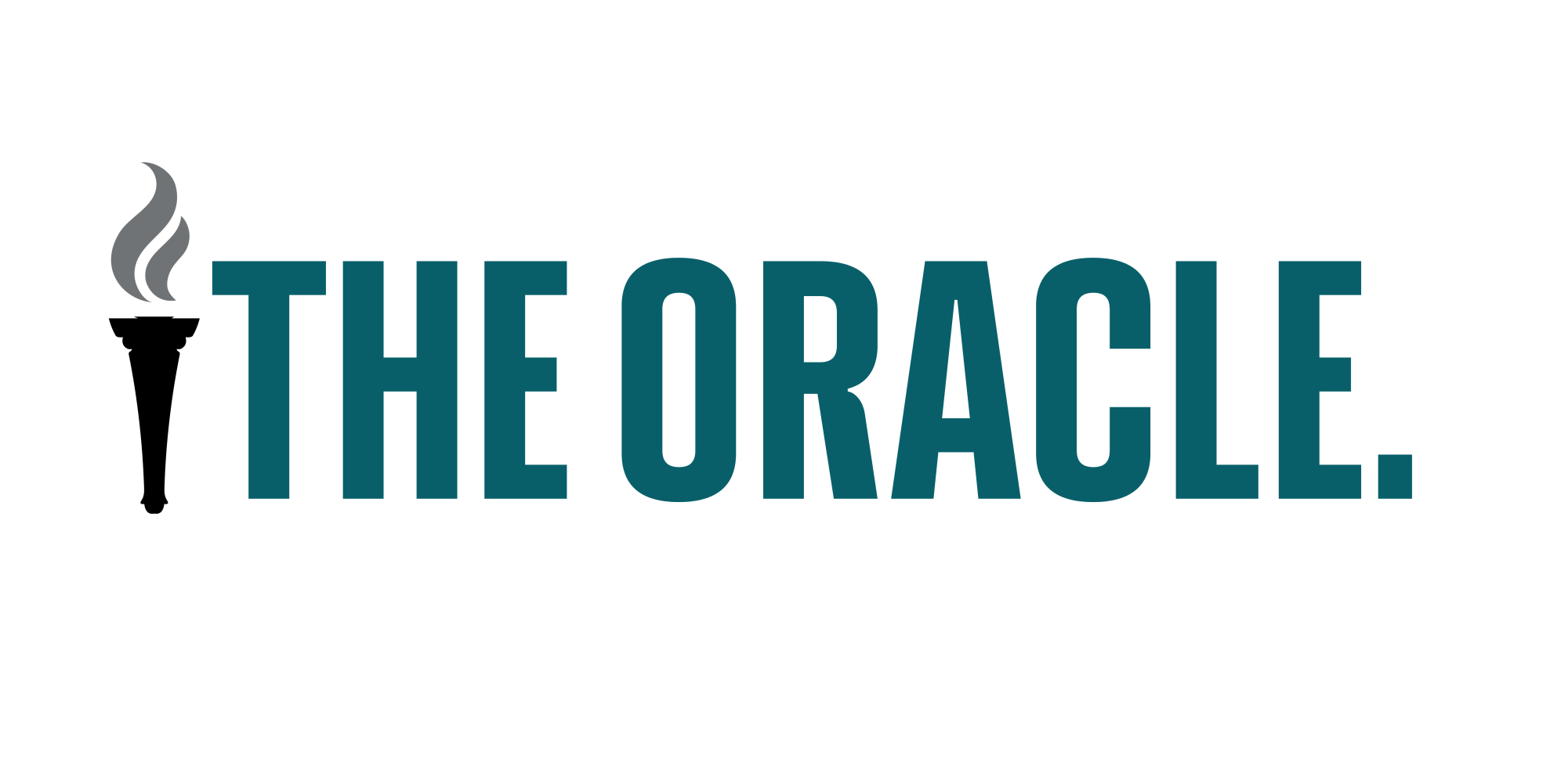
Olympia High School is home to over 3,000 students and staff, but today I would like to shine a light on our hardworking athletic trainers- without them we couldn’t proudly call ourselves Titans. For two of our three athletic trainers
, Amy Harrell and Kelly Lyon, the day starts bright and early preparing for their respective teaching jobs: First Aid & Safety and Human Anatomy. Alongside them is the Senior Athletic Trainer, Danielle Perrotti, who’s been working as an athletic trainer for the past fourteen years. She’s worked caring for athletes at Dr. Phillips High School, Southeastern University, Lake Highland Preparatory school, and now Olympia High school.

As the bell rings at 2:20pm, letting students and staff know that their day has finally come to an end, our athletic trainers are just beginning preparations for their second part of the day. They begin by convening in the athletic training room, which is nestled between the gymnasium and the locker rooms. Not long after the bell rings, the “AT” room is filled with student athletes from every sport Olympia offers, some of which are football, swimming, basketball, and water polo.
The treatment now begins— many of the athletes will come before or after practice to get deep tissue massages which will help them prevent injury and recover. For Perrotti, treating and preventing injuries isn’t the “be-all and end-all,” when it comes to being an athletic trainer. Everything starts with building a strong athlete relationship that will become the foundation of treatment. In the field of athletic training, it is important that athletes feel safe enough to come to their trainers and share what’s wrong. Failure to build this relationship can lead to athletes withholding information about injuries in turn could lead to lasting detriment on their careers. Fellow athletic trainer, Harrell shares some of this philosophy, but believes in a more hands-on approach.
In similar fashion to her colleague, Harrell also puts a strong emphasis on student–trainer relationships. To Harrell, the most vital part of being an athletic trainer is “teaching athletes how to more adequately take care of themselves and perform at their highest
possible level.” From a young girl in Britain watching her father suffer a severe ankle fracture and feeling powerless, to now treating athletes with all types of injuries, Harrell’s dad was the inspiration for her to want to “help people.” Seeing her parent in such a vulnerable situation was something she never wanted to witness again, so she made it her mission to pursue a career in the medical field. Harrell’s constant pursuit of something bigger than herself has a positive effect on the Olympia community, inspiring others to do better and work harder.

Senior football player Dante Jones credits his ability to stay healthy throughout his senior season and perform at his best to our athletic trainers. Many
student athletes share the same sentiment. Teammate Fuad Maali expresses similar gratitude. To the athletes they are more than just trainers— they are mentors and role models they look up to and rely on for support.
It is clear that our athletic trainers’ influence spans far beyond injury care and prevention. It has touched the lives of students, inspiring and uplifting the Olympia community. These dedicated professionals deserve all of the praise and recognition. We are so grateful for everything you do for our Titan family.
